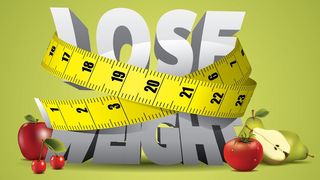How to shed fat fast: Key questions answered
Want to get rid of those final stubborn bits of fat? Clever use of cardio is key

If your chest is bigger and stronger, along with your arms, shoulders, legs and back, you’re well on your way to building a new body. However, if you’re still struggling to shift the stubborn fat from your belly, it may be worth adding some cardio sessions to your weekly training programme to blast it off.
That doesn’t necessarily mean a two-hour gentle run but high-intensity cardio, which has similar fat-burning, muscle-building effects as weight training. Here’s all you need to know, with answers to some of the most common questions on fat loss.
Question: I’ve been running for years but I don’t seem to lose any weight. Why is this?
Answer: Low-intensity cardio training, such as jogging is one of the most popular tactics for weight loss but it’s far from one of the best. Long-duration, steady-state cardio is not an efficient way to burn fat – if fat loss is your primary objective, you’d be better off doing something else.
Question: Why isn’t steady-state cardio best for fat loss?
Answer: Slow cardio can lead to an increase in your levels of the stress hormone cortisol because of the stress this type of training puts on your system. Cortisol encourages the storage of abdominal fat, the very fat most men want to lose, and also lowers testosterone, a hormone that is vital for building muscle and burning fat. Steady-state cardio training is often accompanied by the desire to eat a lot of carbs and not enough protein, which will also lead to fat storage.
Question: What type of training should I do instead?
Get the Coach Newsletter
Sign up for workout ideas, training advice, reviews of the latest gear and more.
Answer: Lift weights and do high-intensity cardio training. Lifting weights helps to promote the release of growth hormones, which burn fat, and you’ll also add more muscle, which has the effect of making your body burn more calories, even when you’re resting. High-intensity interval training, or HIIT, is also great because it has the same effect on your body as weight training and doesn’t stress your body too much.
Question: What is HIIT?
Answer: Short intense bursts of sprinting, cycling or any other type of traditional cardio. Typically it’s a short period of all-out effort followed by slower periods that will allow you to recover before you repeat the pattern. Similar to weightlifting, it creates an oxygen debt that your body must balance afterwards, which as the effect of burning far more calories and releasing more growth hormone.
Question: How do I create a HIIT plan?
Answer: Owing to the nature of this training and level of intensity, you do not want to be doing HIIT on a daily basis. It will quickly cause excess fatigue in your nervous system, at which point it will stop being effective. Instead, do two or three workouts a week in which, after a thorough warm-up you alternate between 20-30 seconds of all-out effort and 46-60 seconds of recovery. Repeat this eight to 12 times and finish with a warm-down. The beauty of HIIT is that you can do any form of exercise that you like, cycling, sprinting, swimming, punching, rowing etc. As you get fitter, increase the length of the work period and reduce the recovery period.
Question: Should I still do prolonged cardio?
Answer: If you love getting outdoors for a long run or cycle, definitely continue to do so occasionally – the benefits to your health and mood are undeniable. However, treat is as a recovery session and do not expect it to make a positive difference to your physique if fat loss is your main objective.
Coach is a health and fitness title. This byline is used for posting sponsored content, book extracts and the like. It is also used as a placeholder for articles published a long time ago when the original author is unclear. You can find out more about this publication and find the contact details of the editorial team on the About Us page.

